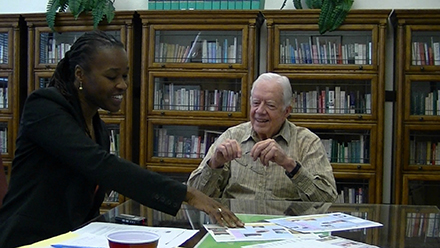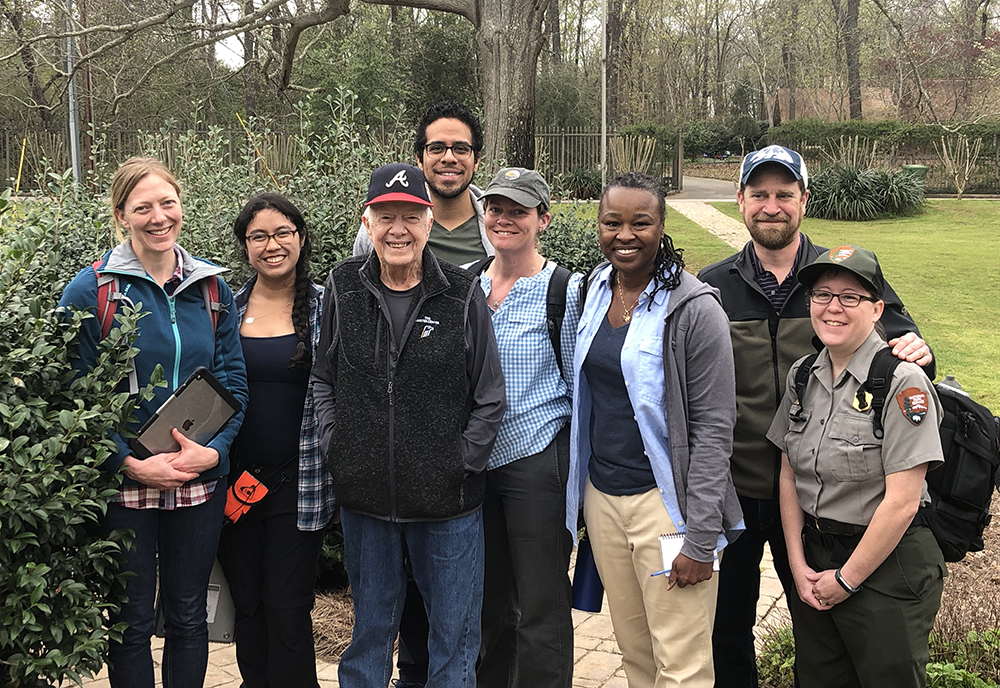By Georgia Jackson, College of Arts and Sciences
Everyone in Archery, Ga. has, what Antoinette Jackson, a professor and chair of the Department of Anthropology, calls “a Carter story.”
“It speaks to the respect he had for the people in his community,” Jackson said of
former President Jimmy Carter. “He really had a love and a close association with
all the people he dealt with regularly throughout his childhood in Archery and in
his adult life in Plains.”
Jackson, who also directs the Living Heritage Institute at USF, spent time in both Archery and Plains as part of her work with the National Park Service to interpret Carter’s life and presidency in relation to the local environment, and to preserve the resources associated with that story.

Jackson interviewed Carter as part of her research.
As an anthropologist, her goal was to enrich the existing history by engaging members
of the local community.
“What was underrepresented was the community, itself,” said Jackson, who later served
as the regional cultural anthropologist and ethnography program manager for the National
Park Service Southeast Region. “They wanted to complete the picture.”
Jackson and her team of USF students attended community events and visited with people
in their homes, businesses and churches to conduct interviews and collect oral histories
from current and former residents of Archery, including Carter, himself. The team
collected stories about everything from fishing to segregated schooling and supported
their findings with photographs and other physical media.
“Together, they tell a story about a small community in rural Georgia that has national
significance,” Jackson wrote in The Conversation.
The team also created a detailed map of the St. Mark A.M.E Church cemetery and identified
nearly 200 graves, expanding the public record on the historically African American
community.
Jackson’s research, which was recently featured on Bay News 9, will continue to support the National Park Service’s efforts to maintain and expand
the Jimmy Carter National Historical Park, which currently includes Carter's boyhood
farm and home, high school and the railroad depot that served as the headquarters
for his presidential campaign and will soon include the Carter home and garden.
Carter was laid to rest on the property next to his wife of 77 years, former First
Lady Rosalynn Carter, on Jan. 9.
